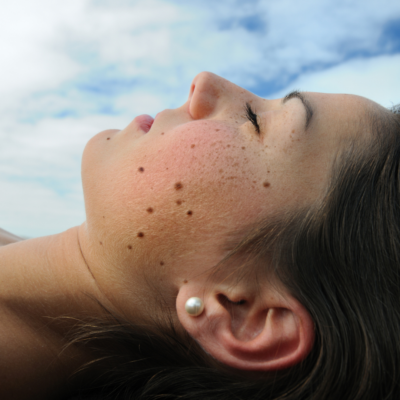
How to Maximize the Anti-Aging Powers of Retinoids
Retinoids are no passing trend. For decades, these vitamin-A derivatives have been celebrated by skin experts for their powers of rejuvenation. In fact, you’d be hard pressed to find a dermatologist who doesn’t full-heartedly recommend them.
Why? Because retinoids work. There’s abundant evidence that they promote smoother, more even, luminous skin. Copious research, countless clinical trials and myriad users attest to exciting results. Retinoids improve the appearance of wrinkles, age spots and other sun damage on face, décolletage, hands… just about anywhere covered by skin.
Meet the Anti-Aging Retinoids
In the ‘70s, dermatologists first started prescribing topical retinoids to diminish acne and acne scars. Then, a wonderful thing happened. Particularly with retinol and tretinoin, older patients were noticing that their skin began to look fresher and more youthful.
Want to try retinoids for yourself? Retinol is the best place to start. It stars in hundreds of over-the-counter (OTC) products worldwide. This makes it easy to find and purchase in formulations from gentle to intense. You may need to go through some trial and error, because even the best skincare brands rarely list retinol concentration. However, it is possible to buy retinol products that do.
Tretinoin (Retin-A) is a more aggressive treatment. It can be irritating, so you need a prescription. Tretinoin comes in cream or gel, various strengths, and a gradual-release formula (Retin-A Micro).
How They Work
Vitamin A is an essential nutrient, crucial for maintaining healthy, beautiful skin. Retinoic acid (all-trans-retinoic acid, or ATRA) is the form of vitamin A your body can most readily put to good use in the skin.
Retinol and tretinoin are both composed of molecules tiny enough to absorb deep into the skin. There, they convert into retinoic acid, stimulating the generation of new skin cells, blood vessels and collagen. In terms of skin rejuvenation, this means that retinol and tretinoin can help:
- Smooth out fine lines and wrinkles
- Soften rough patches from sun damage
- Lighten dark spots
- Plump up thinning skin
- Restore a radiant glow
- Diminish acne and acne scars
- Stave off formation of new wrinkles
Retinol takes two steps to become retinoic acid, which causes some potency to be lost during conversion. Tretinoin becomes retinoic acid in one step, so retains much of its strength. With continuous use, you should start approaching full retinol results in 4 to 6 weeks. Tretinoin results start to be visible after about 3 to 6 months, with the most significant benefits showing at 6 to 12 months. Be patient — it’s worth it!
Are Retinoids Exfoliants?
The answer is no, at least not technically. Exfoliants are meant to remove dead cells from the skin’s surface by dissolving them or causing peeling. In contrast, retinoids can cause peeling not as the goal, but as a side effect. As these vitamin-A derivatives stimulate skin to generate fresh, new cells, these displace old and damaged cells. The displaced cells are what the skin sloughs off.
The shedding eventually subsides, but can be bothersome when you start retinoid treatment. This adjustment period is called “retinization” and can last weeks or even months. If you experience excessive discomfort, irritation or peeling, work with a California Skin Institute board-certified dermatologist to readjust your regimen. And when the flaking does stop, rest assured that your retinoid is still working and fully effective.
How to Get the Best Results
Start with Retinol
Most experts recommend that you begin your retinoid journey with a gentle retinol, then work your way up to tretinoin. Your starter product should be a high-quality retinol that isn’t too strong. Our Retinol Resurfacing Serum, for instance, is available in a low-concentration formula suitable for beginners. It also comes with medium and high percentages of retinol, so has you covered as you build tolerance. You can improve results by choosing retinol products that also contain calming, anti-aging ingredients like hyaluronic acid, arnica, ceramides and peptides.
Proceed to Retin-A
Once your skin has fully adjusted to high-concentration retinol products, you should be able to transition to the gentlest tretinoin without much irritation or peeling. When your Retin-A prescription no longer causes unwanted reactions, consider talking to your board-certified dermatologist about a stronger one. No matter the strength, applying a pea-sized amount to clean, dry skin is all it takes — a thicker layer will not bring greater benefits.
Exfoliate to Amp It Up
You can further boost the efficacy of both retinol and tretinoin by exfoliating for better penetration. Treatments featuring the alpha hydroxy acid (AHA), glycolic acid, can be great for unblocking the skin’s surface by removing dead cells. You can buy glycolic products of various strengths for daily at-home maintenance or more intense weekly or monthly peels. Just be aware that, as with retinoids, you need to start with a low concentration, then work your way up. You can also book clinical-strength glycolic peels with an aesthetician, or consult a board-certified dermatologist about deeper chemical and laser peels.
Tips for Keeping Skin Calm
As you enter the world of vitamin-A topicals, take note of these tricks to keep peeling and irritation at bay:
- Don’t rush it. Increase potency gradually, as your skin adjusts. Monitor your skin to make sure it stays happy.
- Take breaks as needed. Your retinoid will work as long as you apply it at least twice a week.
- Wash your face, wait, then apply. After you cleanse with warm water, retinoids can penetrate more deeply. If your product is too strong at this point, use it after your pores close.
- Your skin may tolerate cream better than gel. Gel is more readily absorbed. Cream lets through slightly less of the active, and can be more soothing and hydrating.
- You can use moisturizer too. Apply it over your retinoid to dilute the strength and calm your skin.
Yes, you can keep your skin calm and beautiful while retinoids work their magic!
Health Considerations
Sun Sensitivity
Topical retinoids make regular use of sunscreen all the more important. Replacing all those dead cells at the skin’s surface with tender new ones can leave your skin more vulnerable to sun damage. Also be aware that, if you wear a retinoid during the day, sunlight can reduce its efficacy.
Vitamin A in the Bloodstream
Just as a drug passes into your system from a nicotine or hormone replacement therapy patch, so can vitamin A from a topical retinoid. It’s nearly impossible to absorb enough vitamin A to be dangerous, unless you’re also regularly eating liver or taking vitamin A supplements. However, an excess of vitamin A has been linked to birth defects. So, out of an abundance of caution, any woman who is pregnant or planning to be should not use topical retinoids.
Put Your Best Skin Forward
If signs of sun damage, aging and acne are a concern, it could be time to go onto the right vitamin-A regimen. The best way to start is with a retinol routine designed with help from a licensed aesthetician for your unique skin. When you’re ready for tretinoin, see a board-certified California Skin Institute dermatologist. Working with an expert, you can enjoy all benefits of retinoids — and avoid molting.
Individual results may vary and are not guaranteed.



 / 291 Reviews
/ 291 Reviews